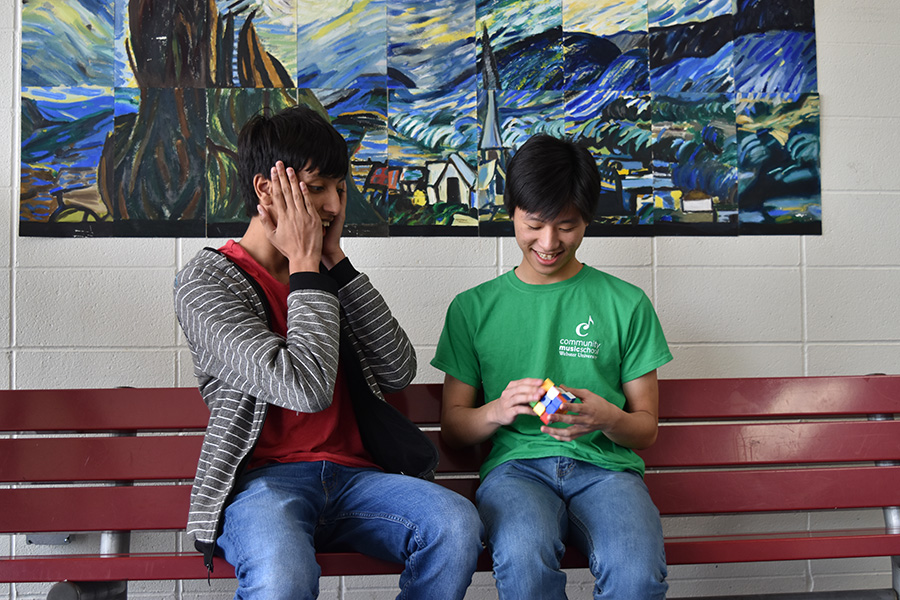With over 43 quintillion possible permutations, the very first Rubik’s Cube took its creator over a month to solve. But for sophomores Jason Wan and Neil Tomala, the virtually endless solving has become a daily activity.
“I had never figured out how to do it before, so I Googled it and from there I found that it was really interesting to do, so I became more focused on that and now it’s a big hobby of mine,” Tomala said.
What once was a daunting challenge quickly became an easy pastime with practice for Wan and Tomala.
“It’s not as hard as everyone thinks, they think it’s some huge thing that you have to be super intelligent to do,” Tomala said. “It’s actually more just memorizing [algorithms] and figuring out how to solve them.”
After developing the ability to solve a cube in under half a minute, both Tomala and Wan have garnered strong reactions from peers.
“Some people just think that I have a million for my I.Q. and other people think that it must be a scam,” Tomala said. “Most people are just like ‘Wow,’ and that’s nice to see them in such shock.”
Tomala and Wan have both stepped outside of the conventional 3×3 cube and taken on 4×4 cubes, lopsided cubes and even with non-cubic puzzles.
“My favorite for just solving is [my 12-sided] megaminx; it’s got so many faces that it takes so much thinking,” Tomala said.
For Tomala and Wan, the puzzle has extended beyond just a hobby.
“It’s really a stress reliever and you get the same feeling every time you solve—it gets you really excited,” Wan said.
In addition to being fun activity, learning and in turn teaching others have allowed them to reach out and form new relationships.
“I [used to be] the only one, [then] I taught Neil how to earlier this year, and [others] in middle school. Now Neil is teaching other people, so it’s a movement,” Wan said.



